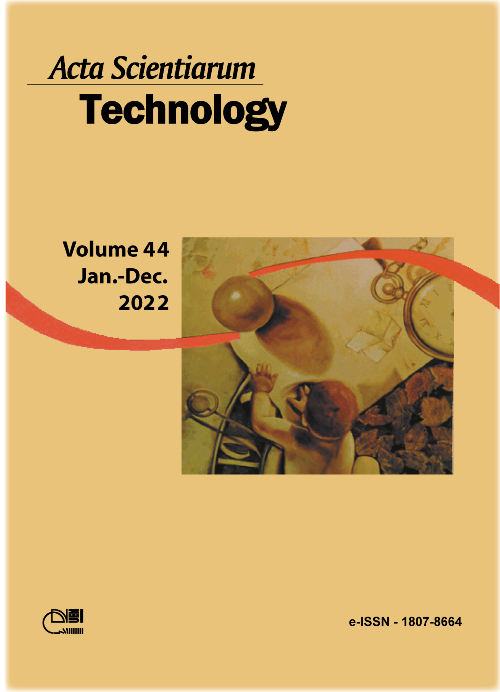Stress-strain analysis of the tow hook of a commercial truck by numerical simulations
DOI:
https://doi.org/10.4025/actascitechnol.v44i1.60577Keywords:
Finite element method; plastic strain; strain gauge.Abstract
Numerical simulations have been widely used in the industry, although with some limitations. One of these limitations is the fact that the thermal effects derived from component manufacturing processes are normally disregarded in the analysis. Thus, the main goal of this study is to evaluate strains near the weld beads of a geometric model for a truck tow hook using numerical simulations by finite element method, considering thermal loads applied before the field loading. To validate the simulation results, an experiment was performed using a tow hook found in a commercial truck. Strain gauge rosettes were placed on the body base plate, and a load of 181.050 N was applied to the hook. This loading was the result of a commercial truck being pulled on level terrain, simulating a normal operation condition of the tow hook. The Von Mises stress found in simulations was approximately 302.23 MPa at the same position where the strain gauges were glued, when the load was applied. The difference between the simulated and experimental values of the equivalent specific strains in the area of the weld beads was 19.2%, and the difference between the permanent displacement values, resulting from plastic strain, in the X-direction was 0.1%. These results justify conducting new studies involving numerical simulations and considering thermal effects on static and dynamic loads in the automotive industry.
Downloads
References
Downloads
Published
How to Cite
Issue
Section
License
DECLARATION OF ORIGINALITY AND COPYRIGHTS
I Declare that current article is original and has not been submitted for publication, in part or in whole, to any other national or international journal.
The copyrights belong exclusively to the authors. Published content is licensed under Creative Commons Attribution 4.0 (CC BY 4.0) guidelines, which allows sharing (copy and distribution of the material in any medium or format) and adaptation (remix, transform, and build upon the material) for any purpose, even commercially, under the terms of attribution.
Read this link for further information on how to use CC BY 4.0 properly.











8.png)




